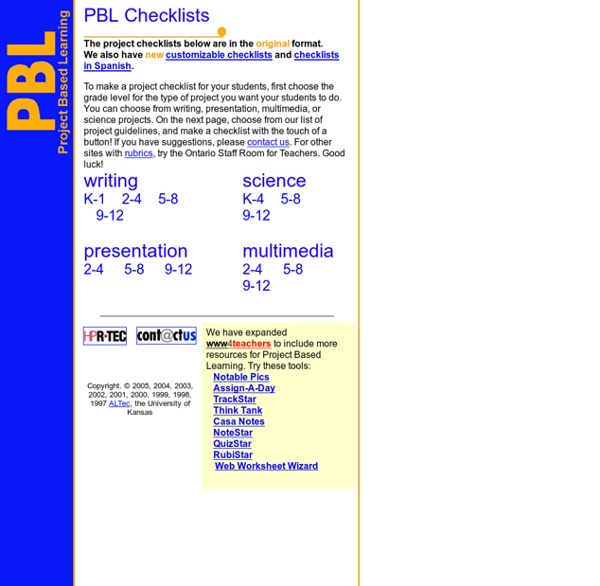



Worksheets, Lesson Plans, Teacher Resources, and Rubrics from TeAch-nology.com Kathy Schrock -- Presentation Descriptions Kathy has presented at conferences and workshops all over the world. Below is a list of workshops she can offer your school, group, or association. In addition, she will work with you to develop whatever specialized presentation you would like in the areas of information literacy, educational technology, social networking, Web 2.0, or technology gadgets! Contact her via e-mail at kathy@kathyschrock.net or call her at 508-247-0044. PRESENTATION DESCRIPTIONS (1 hour) iPads for Teaching and Learning This presentation provides educators of all levels with tips, ideas, and pedagogical strategies for both teaching and learning with an iPad. Creating with the iPad Creating is the highest order thinking skill. H.O.T.S. for Bloom's Bloom's Taxonomy provides a research-based model to organize the cognitive skill set we all utilize as we learn and master new content. Digital Storytelling Meets the Common Core Collaborating and Assessing Using the iPad Literacy in the Digital Age
Scoring Rubric: Business Letter/Memo Printable (6th - 12th Grade) Hanukkah Celebrate the Festival of Lights in your classroom! Hanukkah begins at sundown December 6. December Calendar of Events December is full of events that you can incorporate into your standard curriculum. Our Educators' Calendar outlines activities for each event, including: World AIDS Day (12/1), International Volunteer Day (12/6), Hanukkah (begins at sundown 12/6), Handwashing Awareness Week (12/6-12), Computer Science Education Week (12/7-13), Human Rights Day (12/10), Winter Solstice (12/22), Christmas (12/25), Kwanzaa (begins 12/26), Visit the Zoo Day (12/27), and New Year's Eve (12/31). Plus, celebrate Bingo's Birthday Month, Universal Human Rights Month, and Write to a Friend Month all December long! Hour of Code Introduce your students to basic coding and computer science! Videos Interested in using different types of media in your classroom? Teaching with Comics: Galactic Hot Dogs Reach reluctant readers and English-language learners with comics!
The Ten Commandments of Effective Classroom Management The Ten Commandments of Effective Classroom Management By William Shoap closeAuthor: William Shoap Name: William ShoapSite: See Authors Posts (1) William Shoap posted these commandments on the Classroom Management chatboard, and we thought them worthy of sharing here. One of the biggest barriers to teaching and learning in any school environment is the lack of effective classroom management methods. Young teachers, new to the teaching profession, may possess the necessary academic knowledge to teach their subject but often must learn classroom management skills on the job, which can make for a very challenging first few years in this career. Here are 10 practical tips for new teachers to aid in building a successful classroom management strategy: Thou shall be called by no other name than “Mr.” or “Mrs” or “Ms.” This entry was posted on Sunday, August 1st, 2010 and is filed under *ISSUES, August 2010, William Shoap.
Learn2Type.com - Free Typing Test & Online Typing Tutor Guidelines for Online Teaching Success Years ago at a faculty meeting Larry Ragan, PhD, director of Faculty Development for Penn State’s World Campus, was trying to soft-sell the idea of performance expectations for online faculty. He didn’t want the discussion to be misinterpreted as an indictment against their teaching style, but he also saw an opportunity to share proven practices for improving the online teaching and learning experience. Finally a senior faculty member grew tired of the tip-toeing around the subject and said, “If you don’t tell us what is expected, how will we know what to do to succeed?” The faculty member’s point was well taken, and over the years Ragan and others on various committees at Penn State have worked to define: Core competencies for online teaching success – Currently there are 28 competencies across the three main topic areas of technology, course administration, and pedagogy. The online instructor performance expectations he discussed are: 1. The instructor is expected to: 2. 3. 4. 5. 6. 7.
The Cornerstone Utah Coalition for Educational Technology (UCET) Understanding Rubrics by Heidi Goodrich Andrade Understanding Rubrics by Heidi Goodrich Andrade Authentic assessments tend to use rubrics to describe student achievement. At last, here’s clarity on the term. Every time I introduce rubrics to a group of teachers the reaction is the same — instant appeal (“Yes, this is what I need!”) What Is a Rubric? A rubric is a scoring tool that lists the criteria for a piece of work, or “what counts” (for example, purpose, organization, details, voice, and mechanics are often what count in a piece of writing); it also articulates gradations of quality for each criterion, from excellent to poor. The example in Figure 1 (adapted from Perkins et al 1994) lists the criteria and gradations of quality for verbal, written, or graphic reports on student inventions — for instance, inventions designed to ease the Westward journey for 19th century pioneers for instance, or to solve a local environmental problem, or to represent an imaginary culture and its inhabitants, or anything else students might invent.